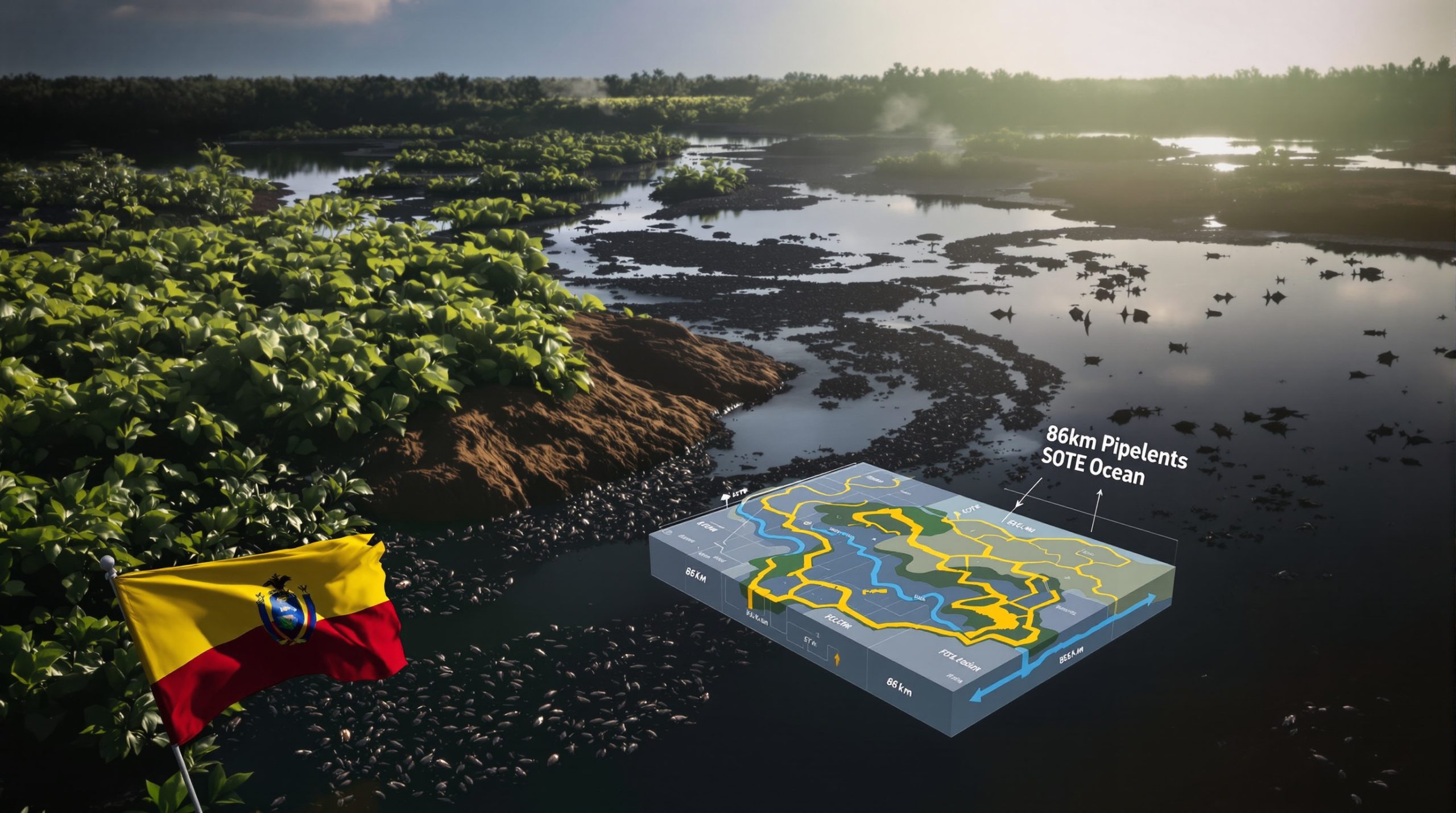How Will the $3.5 Million Federal Funding Impact FPX Nickel's Baptiste Project?
The recent $3.5 million federal funding award represents a significant milestone for FPX Nickel's Baptiste project funding, providing crucial financial support for infrastructure development studies. This non-repayable contribution from Natural Resources Canada's Critical Minerals Infrastructure Fund (CMIF) will cover half the estimated costs for feasibility and environmental studies related to access roads and electrical transmission infrastructure, positioning the project for future development phases.
Critical Infrastructure Planning Now Underway
The funding specifically targets two essential infrastructure components:
-
Electrical transmission line studies – Examining the 155 km route connecting the Baptiste site to BC Hydro's Glenannan substation near Fraser Lake
-
Access road corridor design – Upgrading existing forest service roads to connect the project to provincial highways in the Fort St. James region
These infrastructure elements are fundamental prerequisites for advancing the project toward construction and eventual production.
What Makes the Baptiste Nickel Project Strategically Important?
Unique Mineralogy and Environmental Advantages
The Baptiste project stands apart from conventional nickel operations due to its distinctive geological characteristics:
-
Awaruite mineralization – Contains naturally occurring nickel-iron alloy in ultramafic host rocks
-
Sulphur-free composition – Eliminates acid drainage concerns common to sulphide nickel deposits
-
Low carbon potential – Positioned to become one of the world's lowest carbon-intensive nickel operations
Provincial Recognition and Support
The project has received notable recognition from provincial authorities:
-
Selected as the first project included in British Columbia's new Critical Minerals Office concierge service
-
Designated for priority fast-tracking through regulatory processes
-
Aligned with provincial strategies to develop critical minerals energy transition
How Does This Funding Support First Nations Collaboration?
Collaborative Study Approach
The CMIF funding explicitly supports a collaborative approach with Indigenous communities:
-
Environmental and cultural baseline studies will be conducted in partnership with area First Nations
-
Studies will document traditional land use and cultural heritage along proposed infrastructure corridors
-
Findings will inform both regulatory submissions and project design modifications
Additional Indigenous Support Programs
The funding announcement highlighted complementary opportunities for First Nations:
-
Area First Nations may access additional support through NRCan's Indigenous Natural Resource Partnership Program
-
These complementary funding streams can support capacity building and direct participation in the project
-
Collaborative approach aligns with federal reconciliation objectives and modern resource development practices
What Technical Considerations Shape the Infrastructure Planning?
Power Transmission Route Selection
The proposed 155 km transmission line corridor has been carefully planned to:
-
Connect to BC Hydro's clean electricity grid at the Glenannan substation
-
Avoid major waterbodies, provincial parks, and environmentally sensitive areas
-
Minimize visual impacts and land disturbance through strategic routing
-
Support the project's low-carbon operational objectives
Access Road Development Strategy
The access road studies will focus on:
-
Upgrading existing forest service roads rather than creating entirely new corridors
-
Connecting to provincial highways in the Fort St. James region
-
Designing for all-season access with appropriate safety and environmental protections
-
Minimizing new disturbance footprints through existing corridor utilization
What Is the Baptiste Project's Development Timeline?
Current Project Status
The Tamarack nickel-copper project and other similar developments have demonstrated the importance of strategic planning. The Baptiste nickel project has likewise undergone significant development work since its 2010 discovery:
-
Approximately $55 million invested in exploration and development activities
-
Completion of preliminary economic assessment demonstrating project viability
-
Ongoing environmental baseline studies and community engagement
-
Current focus on infrastructure planning and feasibility studies
Next Development Phases
With the CMIF funding secured, FPX Nickel will advance several parallel workstreams:
-
Detailed feasibility studies for access road and transmission line infrastructure
-
Environmental and cultural baseline documentation along infrastructure corridors
-
Continued engagement with First Nations and local communities
-
Integration of infrastructure planning into the overall project feasibility study
How Does This Project Fit Within Canada's Critical Minerals Strategy?
Strategic Alignment
The Baptiste project funding demonstrates clear alignment with federal priorities:
-
Supports development of nickel as a designated critical mineral
-
Advances infrastructure necessary for resource development in remote regions
-
Promotes collaboration with Indigenous communities in resource development
-
Facilitates low-carbon production of materials essential for clean energy transition
Economic Development Benefits
Beyond the immediate funding, the project offers broader economic potential:
-
Creation of construction and operational jobs in central British Columbia
-
Development of supporting service industries in nearby communities
-
Enhanced regional infrastructure benefiting multiple users
-
Potential for downstream processing opportunities
What Makes the Baptiste Project Environmentally Distinctive?
Low-Carbon Production Potential
The project's environmental profile benefits from several key advantages:
-
Connection to BC Hydro's predominantly hydroelectric power grid
-
Absence of sulphide minerals that typically generate acid mine drainage
-
Potential for simplified processing compared to conventional nickel operations
-
Opportunity to produce nickel with significantly lower carbon intensity than global averages
Environmental Study Focus
The CMIF-funded studies will examine several environmental considerations:
-
Watershed protection along infrastructure corridors
-
Wildlife habitat and migration patterns
-
Cumulative effects assessment with other regional activities
-
Climate resilience of proposed infrastructure
How Will This Funding Impact FPX Nickel's Financial Position?
Capital Allocation Benefits
The non-repayable $3.5 million contribution provides several financial advantages:
-
Reduces FPX Nickel's near-term capital requirements for pre-development studies
-
Allows allocation of corporate resources to other critical project aspects
-
Demonstrates government support that may help attract additional investment
-
Accelerates timeline for completing feasibility-level studies
Overall Project Economics
While representing a fraction of total project development costs, the funding addresses critical early-stage work:
-
Infrastructure typically represents 15-25% of capital costs for remote mining projects
-
Early resolution of infrastructure questions reduces overall project risk profile
-
Government support signals potential for additional partnerships in future phases
-
Improved certainty around infrastructure may enhance project financing options
What Does This Development Mean for Nickel Supply Chains?
Strategic Supply Significance
The Baptiste project represents a potential new source of nickel in a stable jurisdiction:
-
Could contribute to diversification of global nickel supply, particularly in light of Indonesian nickel industry challenges
-
Represents a potential North American source for battery and technology applications
-
Aligns with trends toward responsible sourcing of critical minerals
-
Supports development of regional supply chains for clean energy technologies
Market Positioning
The project's distinctive characteristics position it uniquely in the nickel market:
-
Low-carbon production profile aligns with growing market premiums for responsibly produced materials
-
Sulphur-free mineralization offers potential processing advantages
-
Location in stable jurisdiction addresses growing supply chain security concerns
-
Scale potential to become a significant nickel producer
FAQ: FPX Nickel Baptiste Project Funding
What is the total estimated cost for the infrastructure studies being funded?
The total estimated cost for the feasibility and environmental studies related to the access road and electrical transmission line is approximately $7 million, with the federal government providing $3.5 million (50%) through the CMIF program.
How long is the proposed electrical transmission line?
The proposed transmission line would connect the Baptiste site to BC Hydro's Glenannan substation near Fraser Lake, covering approximately 155 kilometers through a route designed to avoid major waterbodies, provincial parks, and other sensitive areas.
What type of nickel mineralization is found at the Baptiste project?
The Baptiste deposit contains awaruite, a naturally occurring nickel-iron alloy hosted in ultramafic rocks. This sulphur-free mineralization differentiates it from conventional nickel sulphide or laterite deposits.
When was the Baptiste nickel deposit discovered?
The Baptiste nickel deposit was discovered in 2010, with approximately $55 million invested in exploration and development activities since that time.
What is the Critical Minerals Infrastructure Fund?
The Critical Minerals Infrastructure Fund (CMIF) is a federal program administered by Natural Resources Canada designed to support the development of infrastructure necessary for advancing critical mineral projects across Canada.
Further Exploration:
Readers interested in learning more about critical minerals development in Canada can explore Australia's critical minerals strategy for international comparison or investigate how the mining industry evolution is shaping future projects like Baptiste. Additionally, the FPX Nickel official website offers comprehensive details about the project's technical specifications and development plans.
Want to Profit from the Next Major Mineral Discovery?
Discover why major mineral discoveries like FPX Nickel's Baptiste project can lead to significant market returns by exploring Discovery Alert's dedicated discoveries page, where their proprietary Discovery IQ model instantly alerts investors to significant ASX mineral discoveries, turning complex data into actionable insights.




